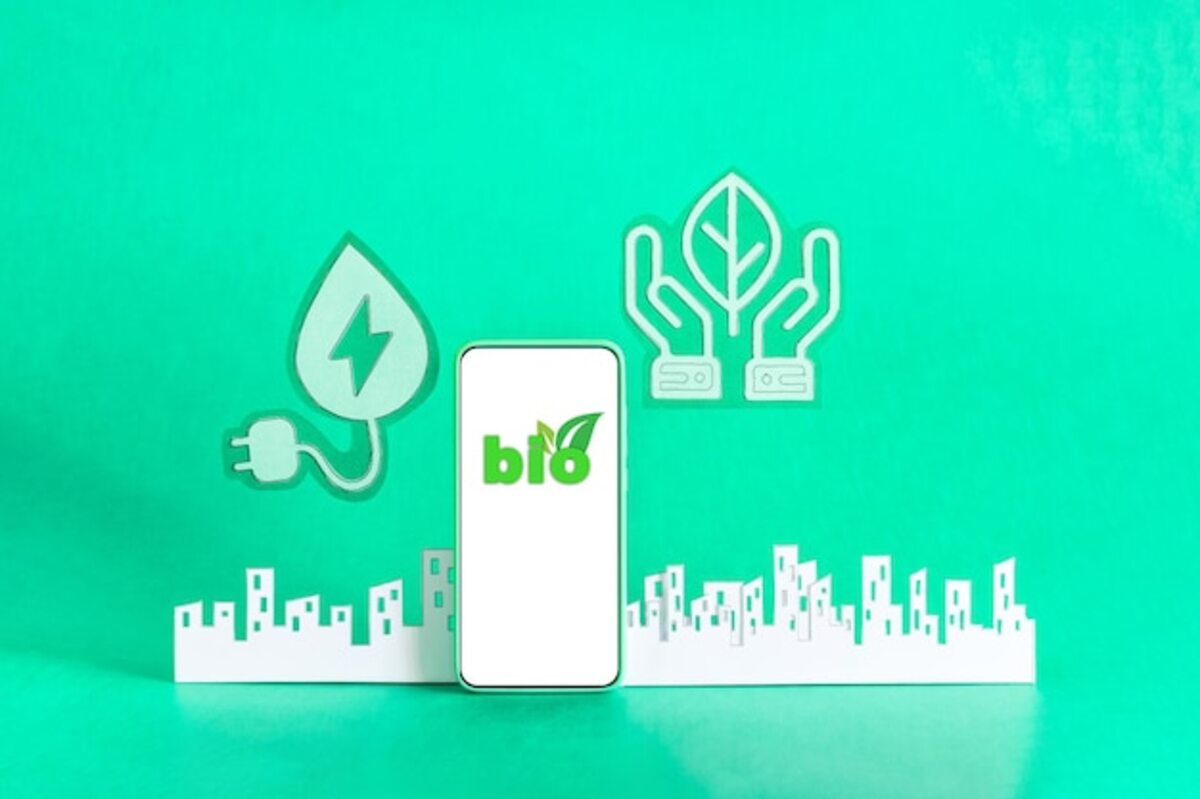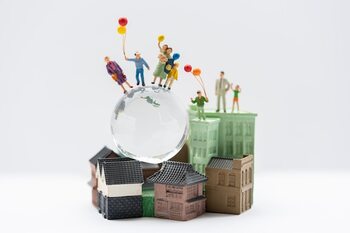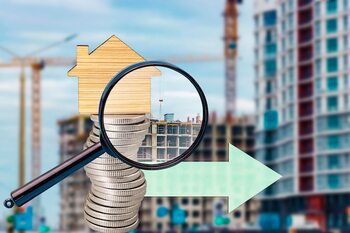The connection between sustainability and the value of your home

Sustainability is not just a trend, but an imperative that transforms the way we live and value our homes. In a community where respect for the environment intertwines with property appreciation, understanding this connection becomes essential. By opting for sustainable practices, we not only contribute to a greener future but also increase the appeal and value of our homes. Discover how making your home an example of sustainability can be the key to enhancing its market value.
What is sustainability and why does it matter for your home?
Sustainability refers to the ability to meet our current needs without compromising the ability of future generations to meet theirs. In the context of home, this involves adopting practices that reduce environmental impact and promote responsible resource use. From selecting eco-friendly materials to implementing efficient energy systems, every decision we make can contribute to creating a more sustainable space. This philosophy not only seeks to preserve the environment but also to improve our quality of life by fostering healthy and balanced environments.
The importance of sustainability in our homes goes beyond personal well-being; it also has a direct effect on the economic value of a property. Houses that incorporate sustainable features, such as solar panels, rainwater harvesting systems, or adequate thermal insulation, are often more appealing to environmentally conscious buyers. As the demand for green housing increases, those that prioritize sustainable practices tend to maintain or even increase their value in the real estate market. Thus, investing in sustainability is not only an ethical choice but also a smart strategy to protect and maximize the investment in our home.
2. Economic benefits of implementing sustainable practices.
Implementing sustainable practices at home not only has a positive impact on the environment but can also bring significant economic benefits. By adopting more energy-efficient solutions, such as solar panels or low-consumption heating and cooling systems, homeowners can reduce their utility bills in the long term. This decrease in operating expenses not only improves the profitability of the home but also makes it more attractive to future buyers who value energy efficiency. Additionally, many cities offer tax incentives and subsidies for those who decide to make sustainable improvements, representing a more affordable initial investment.
Another aspect to consider is that homes with sustainable features tend to perform better in the real estate market. With a growing number of buyers interested in eco-friendly properties, houses that incorporate elements such as rainwater harvesting systems or recycled materials often experience greater appreciation in value. This trend has solidified as environmental awareness grows among consumers; therefore, an eco-friendly home is not only seen as a healthy place to live but also as a smart and profitable long-term investment. In summary, by integrating sustainable practices, homeowners are not only taking care of the planet but also strengthening their economic heritage.
3. How energy efficiency increases the value of your property.
Energy efficiency has become a crucial factor when valuing a property. Homes that incorporate technologies and materials that reduce energy consumption, such as solar panels, efficient heating systems, or double-glazed windows, not only offer comfort and savings on bills but also attract a growing number of environmentally conscious buyers. This trend makes properties with sustainable features stand out in a competitive market, increasing their appeal and intrinsic value. Moreover, the implementation of sustainable energy solutions can translate into long-term economic benefits. Property owners who invest in energy improvements often experience a positive return on their investment in the form of lower operating costs and greater durability of their facilities. As buyers become more demanding and seek homes that minimize their ecological footprint, those who have taken steps towards greater energy efficiency will be better positioned to achieve a premium price for their property, thereby consolidating the connection between sustainability and home valuation.
4. Impact of sustainable design on local communities.
Sustainable design not only benefits individual homeowners but also has a significant impact on local communities. By implementing construction and renovation practices that prioritize energy efficiency, the use of eco-friendly materials, and proper water management, a healthier and more attractive environment is created for all residents. Sustainable housing can contribute to reducing pollution and promoting green spaces, thereby improving the quality of life in the neighborhood. Furthermore, by raising the standard of local architectural design towards more responsible options, it can inspire other homeowners to adopt similar measures, creating a domino effect that transforms the entire community.
Sustainable design can also foster greater social cohesion among community members. The integration of accessible and environmentally friendly common spaces not only promotes healthier social interactions but also generates a sense of belonging among neighbors. Community events focused on sustainability, such as local farmers' markets or workshops on recycling and urban gardening, can strengthen these bonds. When communities come together for a common purpose related to environmental care, a robust social capital is built that further elevates the perceived value of properties within the area. In this context, investing in sustainability is not just a personal decision; it is an investment in collective well-being and in the future appreciation of the residential environment.
5. The importance of using eco-friendly materials in construction.
The use of eco-friendly materials in construction is essential to promote sustainable housing and, in turn, increase its market value. These materials, which are often made from renewable or recycled resources, not only reduce the home's carbon footprint but also improve energy efficiency and indoor air quality. For example, certified woods, paints without volatile organic compounds (VOCs), and eco-friendly insulation are options that not only provide environmental benefits but also offer durability and attractive aesthetics. Each of these elements contributes to a healthier environment for its inhabitants and can be a compelling argument for potential buyers interested in living in a space that respects the planet.
In addition to the direct benefits for the environment and the health of its occupants, incorporating sustainable materials in construction can significantly increase the value of the home. More and more consumers are willing to pay a premium for properties that demonstrate a commitment to responsible and sustainable practices. The positive perception of homes built with eco-friendly materials translates into higher demand in the real estate market. Thus, choosing these alternatives not only represents an ethical and conscious decision but also a smart strategy to maximize the investment in your home in the long term.
6. Strategies for incorporating vertical gardens and green roofs.
Incorporating vertical gardens and green roofs into your home is an effective strategy to enhance both the aesthetics and sustainability of your space. These elements not only bring a touch of nature to urban environments but also offer significant ecological benefits, such as improving air quality and providing thermal insulation. By choosing native and climate-adapted plants, you can create an ecosystem that attracts local wildlife and promotes biodiversity, which adds emotional and environmental value to your property.
Furthermore, the implementation of these green spaces can be more accessible than it seems. There are multiple modular solutions and automated irrigation systems that facilitate their maintenance, allowing even the least experienced homeowners in gardening to enjoy their benefits. From balconies to complete rooftops, every corner offers an opportunity to maximize the use of space and transform underutilized areas into true urban oases. By integrating these sustainable practices, you not only beautify your home but also increase its long-term commercial appeal, aligning it with the current demands of the environmentally conscious real estate market.
7. How environmental certifications affect real estate value.
Environmental certifications, such as LEED, BREEAM, or Energy Star, play a fundamental role in the valuation of real estate properties. These accreditations not only ensure that a building meets high standards of sustainability and energy efficiency, but also provide buyers with a guarantee of quality and comfort. By acquiring a certified property, future owners can benefit from lower operating costs due to its energy efficiency, which is attractive in a market where savings are increasingly valued. Thus, environmental certifications become a hallmark that can significantly increase the added value of a home.
Additionally, the growing interest in sustainable lifestyles has led buyers to prioritize properties that are not only aesthetically pleasing but also environmentally responsible. Homes with environmental certifications tend to be perceived as more modern and aligned with current market expectations. This means that by investing in improvements to obtain such certifications, owners can expect not only to recoup their initial investment through increased property value but also to enjoy greater demand when they decide to sell. In summary, environmental certifications are not just a symbol of ecological commitment; they are a smart strategy to maximize real estate investment.
8. The role of the community in promoting sustainable lifestyles.
The community plays a fundamental role in promoting sustainable lifestyles, as it is the environment where responsible practices are developed and shared. When neighbors come together to adopt eco-friendly initiatives, such as the creation of urban gardens or the organization of workshops on recycling and energy conservation, they create a multiplier effect that inspires others to follow their example. This sense of collectivity not only fosters a culture of environmental care but also creates stronger social bonds, increasing the intrinsic value of the community and positively impacting the value of local properties.
Additionally, communities that promote sustainable lifestyles often receive support and recognition from institutions and organizations dedicated to the environment. This can translate into economic incentives, such as subsidies for green projects or improvements in public infrastructure that favor sustainable transportation. The interrelation between community commitment to sustainability and favorable policies creates an attractive environment for potential buyers, who seek not only a home but also to belong to a proactive and future-conscious community. In this way, promoting sustainable practices at the community level becomes an effective strategy to enrich our lives as well as to increase the real and perceived value of our homes.



